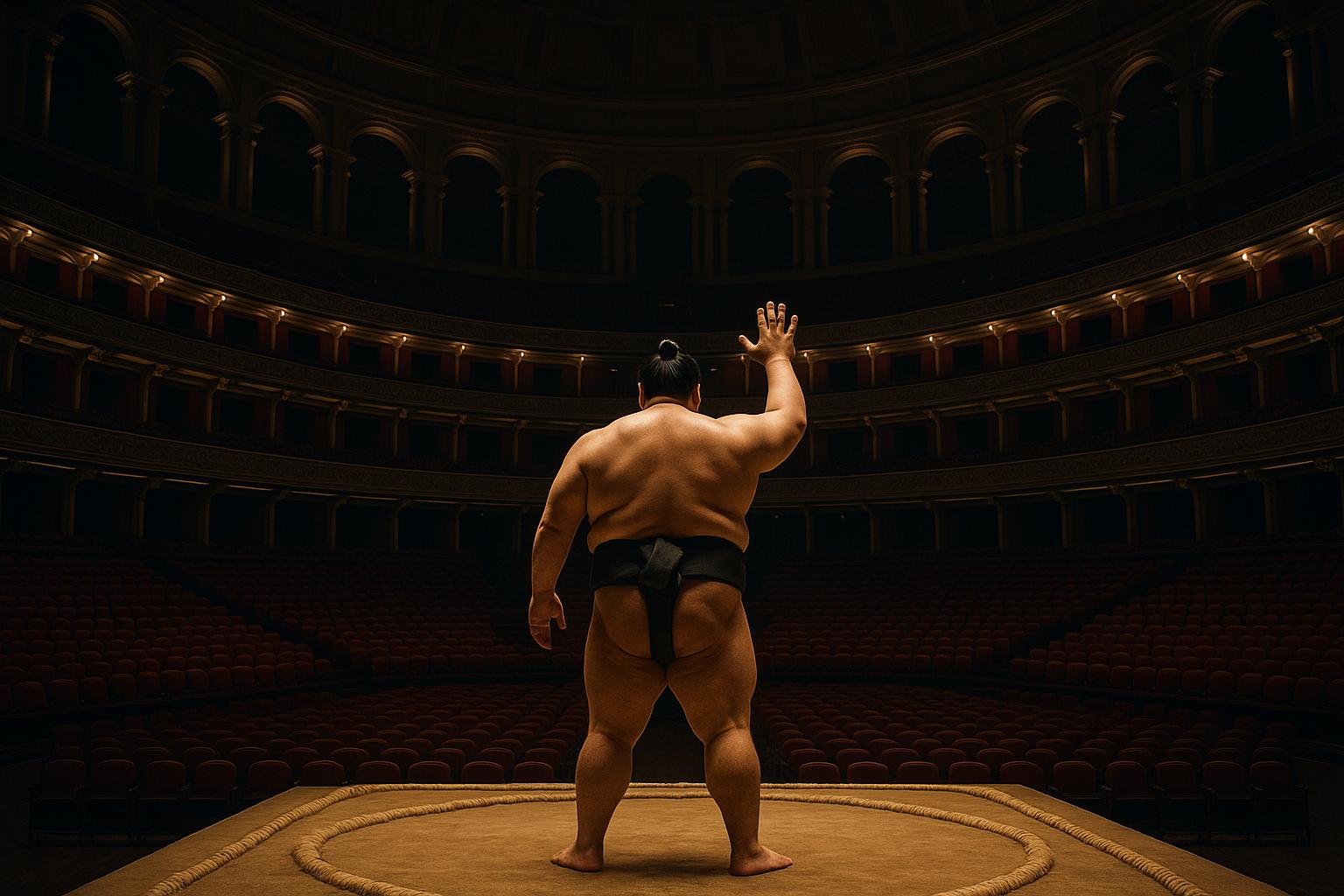After captivating Londoners on the streets with sightseeing and social media buzz, sumo wrestlers took centre stage for a historic five-day Grand Sumo Tournament at the Royal Albert Hall, attracting sell-out crowds eager to witness one of Japan's most ancient sports in the heart of the UK capital. This event marks only the second occasion since 1991 that a Grand Sumo Tournament has been staged outside Japan, and uniquely, both instances have taken place at the Royal Albert Hall, underscoring the venue’s long-standing tradition of hosting prestigious cultural and sporting events.
The transformation of the iconic hall was remarkable: crews constructed a traditional clay dohyo—the sacred ring made from clay and rice bales—inside the arena, covered by a suspended purple canopy, all captured and shared widely on TikTok and other social media platforms. This elaborate setup underscored the organisers’ commitment to preserving sumo’s deep-rooted Shinto traditions during the London event. Spectators were treated to an intense opening night featuring 20 bouts, where the wrestlers' immense physical prowess and ceremonial rituals, such as the salt-throwing purification rites, lent the evening a unique blend of sport and heritage that resonated strongly with the crowd.
Event organisers faced practical challenges due to the athletes' considerable stature; many wrestlers weigh around 25 stone (approximately 160kg), necessitating reinforced seating able to support up to 200kg—a doubling of the Royal Albert Hall’s usual weight capacity. Director of programming Matthew Todd revealed that new chairs were specially sourced, alongside reinforced toilets and safety measures to accommodate these heavyweight athletes safely. The venue also issued warnings about the front-row seating arrangements, where the absence of barriers meant there was a risk of wrestlers falling into the spectator area, advising caution particularly for those with mobility issues and for young children.
The arrival of the wrestlers was met with fascination as clips showed them exploring London’s landmarks, including a McDonald’s visit, browsing at TK Maxx, and mimicking the Beatles’ famous Abbey Road crossing, delighting passers-by and showcasing a human, relatable side to the elite athletes. The tournament itself was spearheaded by the Japan Sumo Association and its chairman, Hakkaku, a former Grand Champion, who has championed modernising sumo after a period marked by scandals, helping to bring the sport’s rich cultural significance to a global audience.
Among the top competitors were two grand champions or yokozuna: Mongolia’s Hoshoryu Tomokatsu and Japan’s Onosato Daiki, the latter noted for becoming the fastest wrestler to achieve this rank in the modern era. The event, which also featured a Ukrainian wrestler executing a rare skillful move, was hosted to promote UK-Japan ties and cultural exchange, as recognised by Royal Albert Hall’s chief executive, James Ainscough OBE. He noted the honour in hosting the tournament again, highlighting sumo’s unique combination of sport, tradition, and ritual, which distinguishes it from other longstanding activities like boxing and wrestling frequently held at the venue.
As the tournament unfolded, the audience was treated not only to fierce competition but also to cultural performances such as the traditional bow-twirling ceremony used to purify the ring. The enthusiastic crowd embraced these rituals and the raw physicality of the bouts, illustrating the event’s success in bringing this centuries-old Japanese cultural spectacle vividly to life in London. The Grand Sumo Tournament’s return to the Royal Albert Hall after 34 years serves as a testament to sumo’s enduring global appeal and the dedication of those working to preserve and promote its legacy worldwide.
📌 Reference Map:
- Paragraph 1 – [1], [3], [7]
- Paragraph 2 – [1], [2]
- Paragraph 3 – [1]
- Paragraph 4 – [1], [2], [4]
- Paragraph 5 – [1], [5]
- Paragraph 6 – [4], [6], [5]
- Paragraph 7 – [5], [1], [3]
Source: Noah Wire Services
